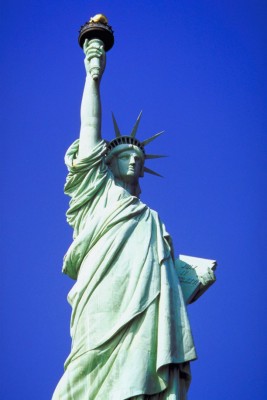| The arrival
of millions of Europeans and their impact upon the churches. |
 |
|
Thousands
of immigrants longed to see the Statue of Liberty as they entered
the United States
|
Nineteenth-century
immigration greatly expanded religious pluralism
in North America. Between 1815 and 1914, some 30 million people immigrated
to the United States. The greatest numbers came from Germany, Italy, Ireland,
and Austria-Hungary. Some were devout Christians and others had no firm
faith commitments. Catholic and Protestant Americans therefore sought
to recruit newcomers and minister to their needs through preaching, humanitarianism,
and education.
Roman Catholics
from central and eastern Europe wanted parishes and priests of their own
languages and nationalities. The newcomers brought ethnic saints and festivals;
their views of religious authority often clashed with Catholics who had
become more "Americanized." Parochial schools, hospitals, and ethnic parishes
were built in many immigrant Catholic communities.
Lutherans
included those who wanted a "pure" Lutheran theology and those who were
drawn toward American evangelicalism.
Those who prized Lutheran confessionalism
reversed earlier trends toward American revivalism and ecumenism.
Scandinavian immigrants to the upper Midwest brought blends of Lutheran
Pietism and confessionalism, and built churches, schools, and hospitals.
Orthodox Christians
immigrated from Greece, Russia, and the Balkans in huge numbers during
the late nineteenth and early twentieth century. The Russian Orthodox
began a mission in Alaska in 1794, but later waves of immigration made
Orthodoxy a significant presence in most major North American cities.
These churches had strong ethnic identities, differing from each other
in language, worship, and customs.
|